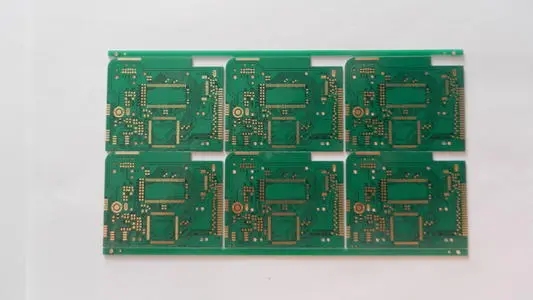Reliability Design Analysis of PCB Board in High Speed DSP System
With the rapid development of microelectronics technology, the application of new devices has led to a large circuit layout density in modern EDA designs, and the signal frequency is also very high. With the use of high-speed devices, high-speed DSP (digital signal processing) system designs will increase The more it is to deal with signal problems in high-speed DSP application systems, it becomes an important design issue. In this design, its characteristic is that the system data rate, clock rate, and circuit density are constantly increasing, and its PCB printed board design performance The behavior characteristics that are completely different from the low-speed design, that is, signal integrity problems, aggravated interference problems, electromagnetic compatibility problems, etc. appear.

These problems can cause or directly cause signal distortion, timing errors, incorrect data, address and control lines, system errors, and even system crashes. Failure to solve them will seriously affect system performance and bring immeasurable losses. The method to solve these problems mainly depends on the circuit design. Therefore, the design quality of the PCB printed board is very important, and it is the only way to transform the optimal design concept into reality. The following discusses several issues that should be paid attention to in the reliability design of PCB boards in high-speed DSP systems.
Power design
The first thing that needs to be considered in the PCB board design of a high-speed DSP system is the power supply design. In power supply design, the following methods are usually used to solve signal integrity problems.
Consider the decoupling of power and ground
With the increase of DSP operating frequency, DSP and other IC components tend to be miniaturized and packaged densely. Usually, multi-layer boards are considered in circuit design. It is recommended that both power and ground can use a dedicated layer, and for multiple power sources, For example, the DSP I/O power supply voltage is different from the core power supply voltage, and two different power supply layers can be used. If the processing cost of a multilayer board is considered, a dedicated layer can be used for more wiring or relatively critical power supplies. The power supply can be routed the same as the signal line, but the width of the line must be sufficient.
Regardless of whether the circuit board has a dedicated ground layer and power layer, a certain and reasonably distributed capacitance must be added between the power supply and the ground. In order to save space and reduce the number of through holes, it is recommended to use more chip capacitors. The chip capacitor can be placed on the back of the PCB board, that is, the soldering surface. The chip capacitor is connected to the through hole with a wide wire and connected to the power supply and the ground through the through hole.
Wiring rules considering power distribution
Separate analog and digital power planes
High-speed and high-precision analog components are sensitive to digital signals. For example, the amplifier will amplify the switching noise to make it close to the pulse signal, so the analog and digital parts of the board, the power layer is generally required to be separated.
Isolate sensitive signals
Some sensitive signals (such as high-frequency clocks) are particularly sensitive to noise interference, and high-level isolation measures must be taken for them. The high-frequency clock (a clock above 20MHz, or a clock with a flip time of less than 5ns) must have a ground wire escort, the clock line width should be at least 10 mils, and the escort ground wire width should be at least 20 mils. The hole is in good contact with the ground, and every 5cm is punched to connect with the ground; a 22Ω~220Ω damping resistor must be connected in series on the clock sending side. The interference caused by the signal noise brought by these lines can be avoided.